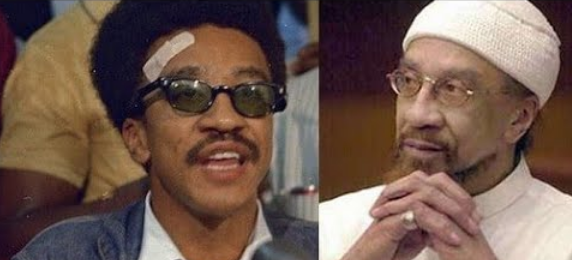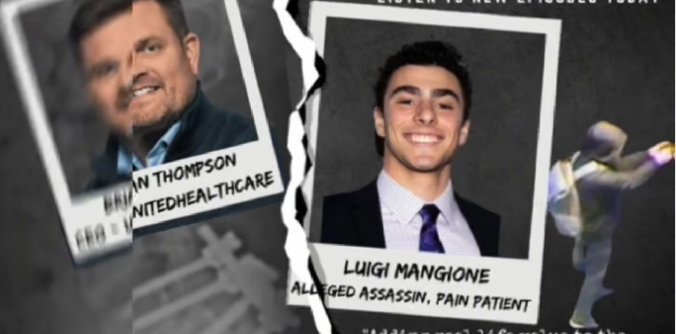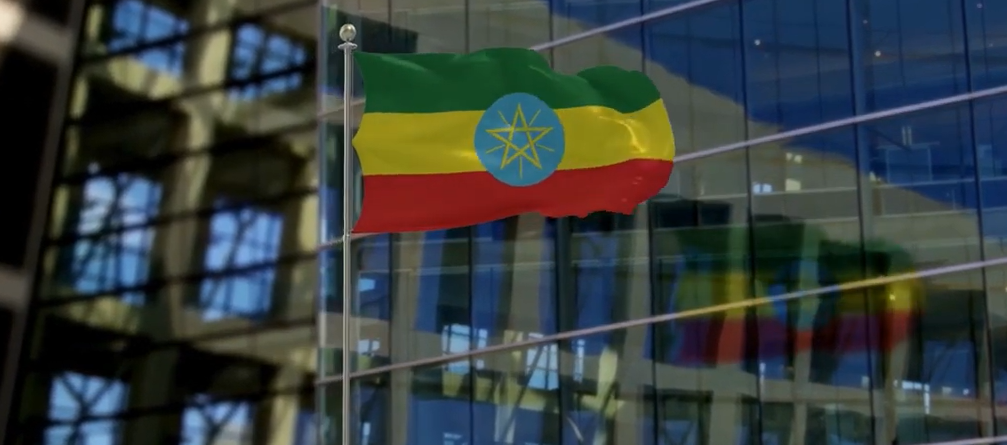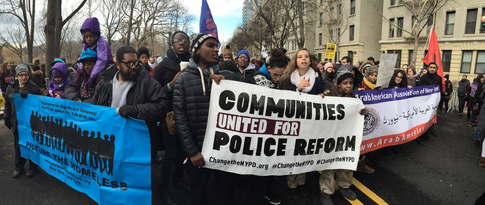[The Zimmerman Travesty]
“Those who do not remember the past Are condemned to repeat it.”–George Santayana
When I heard the George Zimmerman verdict three reflections came to mind.
Firstly, I remember the observations by Yogi Berra, one-time Yankee philosopher, with a flair for the tautological, who said “it’s like déjà vu all over again.”
Secondly, I recall the observation of the French playwright, Jean-Baptiste Alphonse Karr who stated, “plus ça change, plus c’est la même chose”–the more things change, the more they remain the same. Finally, I remember the observation of Albert Einstein that “insanity is doing the same thing, over and over again, and expecting a different result.”
The only surprise about the verdict, is the fact that so many people were surprised by it.
We have seen this movie before in America. It is a part of the tragic American history of racism in the criminal justice system. There was a certain predictability, one may say historical inevitability, about the George Zimmerman verdict. There is a long history of all-White or predominantly White juries, acquitting White perpetrators for shooting unarmed Black boys. Let us look at the historical record.
In 1955, Emmett Till, a 14 year old African American boy, was murdered in Mississippi, after reportedly flirting with a White woman, Carolyn Bryant. Several nights later, her husband, Roy Bryant, and his half-brother, J.W. Milam arrived at the home of Till’s great uncle, Mose Wright, where they kidnapped Till, transported him to a barn, beat him and gouged out one of his eyes, before shooting him in the head, and disposing of his body in the Tallahatchie River, after weighing his body down with a 70-pound cotton gin fan tied around his neck, with barbed wire. His body was retrieved from the river a few days later.
In spite of the eye witness testimony by Mose Wright identifying Roy Bryant and J.W. Milam as the persons who had abducted Till from the house, eyewitness testimony from others who had heard Till’s cries as he was beaten in the barn, the all-White jury acquitted the two defendants after 67 minutes of deliberation. Bryan and Milam were so emboldened by the verdict, that they gave an interview to Look Magazine, confessing to the crime, one year after their acquittal.
I recall the case of Clifford Glover, a 10-year old Black boy, and his stepfather, who were walking in an empty car lot in South Jamaica on April 28, 1973. They were confronted by two White undercover policemen, Thomas Shea and his partner Walter Scott. Believing that they were about to be robbed, Clifford Glover and his stepfather ran away. Without identifying themselves as police officers, Shea and his partner opened fire on the two unarmed Black men, fatally wounding Clifford Glover in the back. A jury, of 11 Whites and 1 Black, acquitted Shea, in spite of the overwhelming evidence of guilt.
I also recall the case of a 15-year old Brooklyn boy, Randolph Evans, who was fatally shot by police officer, Robert Torsney, at point blank range in the head, on Thanksgiving Day, November 25, 1976. Because of the overwhelming evidence of guilt, Torsney was forced at trial to interpose an insanity defense.
He claimed that he was suffering from a psychotic episode due to an epileptic condition called the Penfield syndrome. The American Psychiatric Association submitted a letter to the Judge, at the Torsney trial, claiming that there was no such psychiatric condition. In spite of that, on November 30, 1977, one year after Randolph Evans’ funeral, a predominantly White jury found Torsney not guilty, by reason of insanity. Torsney was remanded to Creedmoor Psychiatric Center in Queens. One year later, a Brooklyn Supreme Court Judge ordered Torsney’s release, stating that “he no longer posed a threat to society.”
On February 4, 1999, Amadou Diallo, a 23-year old immigrant from Guinea, was killed by four plain clothes undercover police officers – Sean Carrol, Richard Murphy, Edward McMillan and Kenneth Boss, who fired a total of 41 shots at Diallo, as he was standing outside of his apartment at 1157 Wheeler Avenue in the Soundview section of the Bronx. Diallo was unarmed, at the time of the shooting, and had been reaching for his wallet. The four officers were indicted by a Bronx Grand Jury of Second Degree Murder and Reckless Endangerment.
On December 16, 1999, the Appellate Division First Department, in an unprecedented decision, ordered a change of venue, from the majority-minority county of the Bronx to the predominantly White county of Albany, in Upstate New York, stating that “pretrial publicity had made a fair trial in New York City impossible.” On February 25, 2000, after two days of deliberation, a jury of 8 Whites and 4 Blacks in Albany, acquitted the officers of all charges. Officer Kenneth Boss was acquitted, even though in had previously been involved in the shooting of an unarmed Black man, who subsequently died.
On November 25, 2006, three men, including Sean Bell, and his two friends, Trent Benefield and Joseph Guzman, were shot 50 times by a team of undercover police officers. Sean Bell subsequently died, and his two friends were wounded. The evidence indicated that the police officers did not identify themselves, and there was no evidence of a gun in the vehicle belonging to Sean Bell. On April 25, 2008, Justice Arthur Cooperman of the State Supreme Court in Queens acquitted the officers of all charges — Manslaughter, Reckless Endangerment and Assault. Although the officers were acquitted, all three of them, and their commanding officer, were subsequently fired or forced to resign from the NYPD.
The evidence establishes that it was not only the all-White or predominantly White juries that were responsible for the acquittal of White defendants. The courts were also part and parcel of this incestuous and unholy alliance between the judiciary and the NYPD. It was the Appellate Division, First Department, that took the unprecedented step of granting a change of venue in the Diallo case, from the majority-minority county of the Bronx to the predominantly White county, Albany, in upstate New York.
The result was predictable.
It was a Supreme Court judge, in the Randolph Evans case, who permitted the defense attorney to interpose a defense of insanity, in the face of expert opinion from the American Psychiatric Association that no such psychiatric condition existed. It was also a Supreme Court judge who released Robert Tornsey from a mental institution, one year after he had been convicted.
On April 12, 1985, Judge Vincent Vitale, of the Bronx Supreme Court dismissed the indictment against police officer, Stephen Sullivan, in the murder of Eleanor Bumpers, claiming that the indictment was “legally insufficient to support the charge of manslaughter and any other lesser included offense,” and that Sullivan’s actions were “in conformity with the guidelines and procedures of the NYPD.” (Recall that in May, 2013, Acting Justice Steven Barrett of State Supreme Court in the Bronx also dismissed the indictment against police officer Richard Haste in the killing of Ramarley Graham).
Some people have claimed that George Zimmerman was acquitted because of the weakness of the prosecution’s case. This contention is patently ridiculous, since American judicial history has clearly revealed that predominantly White jurors will acquit White perpetrators, even in the face of overwhelming evidence of guilt.
This, however, does not detract from the fact that the prosecution failed to establish a compelling case of guilt. The case was lost before it started. It was lost at the Voir Dire stage of jury selection, when the prosecution allowed the defense attorneys to challenge and eliminate every Black juror on the panel, even though Blacks and Hispanics constitute a significant portion of the demographics of Seminole County. According to the 2010 census, Blacks constitute 11.14% of the population, Hispanics 17.14% and Whites 78.22%. Thus, the demographics clearly reveal that, although Seminole is a predominant White County, there is a sizeable proportion of Blacks and Hispanics living there. Yet the prosecution permitted the defense to select an almost all White-jury.
Where there is evidence that the jury pool or the jury panel is predominantly weighted in favor of the majority ethnic group, the side representing the minority interest, can challenge the entire pool or panel on two grounds: (1) Demographic Disparity and (2) Equal Protection grounds. The attorney representing the minority interest can claim that a pool or panel is not representative of the community from which it is drawn, and that it deprives his client of the equal protection provision of the Fourteenth Amendment. Thus, the prosecutor should have challenged the jury pool and jury panel, as being unrepresentative of Seminole County, and as being unconstitutional. They also should have interposed Batson challenges to each attempt by the defense attorney to use their preemptory challenges to strike Black juror from the panel, forcing the defense to present race-neutral explanations for their elimination of Black jurors. The prosecutor’s failure to obtain a racially balanced jury was the first, and perhaps the most strategic blunder, of the entire criminal proceedings.
Secondly, the prosecution should have articulated a clear theory of the case. Its main hypothesis or theory should have been that George Zimmerman was motivated by racial animus towards Trayvon Martin. On the basis of that racial animus, Zimmerman targeted or profiled Trayvon Martin as a thug, a suspect or potential criminal. They should have contended that Zimmerman stalked Martin, tracked him down, and killed him. The judge, however, undermined the prosecution’s theory of the case from the very inception, by prohibiting the prosecution from using the theory of racial profiling.
The prosecution spinelessly surrendered to the judge’s dictates, by stating, in summation, that “this case is not about race.” If the case was not about race, then what was it about? Was it about Skittles and Arizona iced tea? The defendant himself corroborated the prosecution’s theory of the case. There was a debate in media circles about whether Zimmerman described Trayvon Martin as a “fucking coon.” He further stated that these “fucking assholes always get away.” (There is no debate about this since the tape is very audible) Zimmerman stalked Martin, confronted him, even though a 911 operator told Zimmerman to stay in his vehicle. Zimmerman initiated the physical encounter and shot Martin through the heart, even though Zimmerman’s life was not threatened with death or serious physical injury. The evidence also indicates that in his capacity as head of the neighborhood watch, Zimmerman had made reports about 46 incidents, in one case to report of a Black suspect whom he said appeared to be 7 years old.
Thirdly, the defense attorneys retained the services of professional videographers who compiled a fairly technologically advanced reconstruction of the crime scene, based on Zimmerman’s self-serving account of what transpired. On the contrary, the prosecution failed to retain the services of professional technicians who could have created a reconstruction of the crime scene, based on the input of police investigators.
The prosecution reconstruction should have started from the 711 grocery store, where Martin had purchased the Skittles and iced-tea. Then it should have gravitated to the area by the parking lot, where he was confronted by Zimmerman. Then it should have moved to the area by the apartment building, where Martin was shot by Zimmerman. This reconstruction would have clearly indicated that Trayvon Martin was moving in a linear trajectory, from the grocery store to the apartment building, where the shooting took place, which was only a few yards from his father’s apartment building.
Fourthly, the prosecution did not properly prepare its witnesses for trial. Its chief witness, Rachel Jeantel, seemed uncomfortable on the witness stand, was reluctant to testify, and threatened not to return for the afternoon session. It’s forensic expert, the deputy medical examiner, Dr. Shiping Bao, was the laughing stock of the court. He seemed uncomfortable on the witness stand. He seemed incapable of recalling significant events, without looking at his notes. He failed to acknowledge that his assistants had made basic elementary mistakes in the collecting and storage of evidence at the crime scene. He contradicted the prosecution’s theory in several major areas.
He conceded that there was marijuana traces in Trayvon Martin’s blood, and this may have affected Trayvon Martin’s behavior. However, he had said, on a prior occasion, that the amount of marijuana was insufficient to affect Trayvon Martin’s behavior. He also contradicted the prosecution’s theory of how long Trayvon Martin might have survived after the fatal shooting. Many of the witnesses called by the prosecution seem to be testifying on behalf of the defense. The prosecutors also failed to object to one of the defense witnesses who testified that she was the victim of a burglary perpetrated by a Black man. This evidence was clearly irrelevant, and should not have been admitted. The prosecution should have requested an offer of proof to ascertain the relevance of the proffered testimony, and should have interposed a motion in limine to exclude the testimony.
On the other hand, many of the witnesses called by the defense, were impressive. Dr. Vincent Di Maio, a forensic expert, called by the defense, was permitted to make a number of exaggerated claims that were not supported by the scientific evidence. The prosecution failed to object to Dr. Di Maio’s speculative and unscientific opinions. The defense called an impressive list of character witnesses, who testified about Mr. Zimmerman’s good character and “sterling” reputation. The prosecution did not rebut these claims of good character by introducing into evidence Mr. Zimmerman’s record. He had a felony charge for using “violence and battery” against a police officer reduced and he was sentenced to anger management. The claims of Zimmerman’s integrity could easily have been rebutted by introducing evidence that he had fraudulently misrepresented the amount of money he had accumulated in his legal defense fund.
One of the greatest deficiencies in the prosecution’s case, was its failure to call character witnesses to testify about Trayvon Martin’s sterling reputation. In normal circumstances, Trayvon Martin’s character would not have been an issue, but since the defense attorneys had ‘opened the door’ on Martin’s integrity, the defense would have been justified in calling witnesses to attest to Trayvon Martin’s exemplary character. They could have called the cashier at the 711 to testify about Trayvon Martin’s demeanor that night – the fact that he was not threatening in any way, and did not appear to be on drugs. They could have called teachers from his high school, pastors from his church, community leaders from Sanford to testify about his fine character and sterling reputation.
Finally, the prosecution failed to object when the judge decided to give the standard charge on the “Stand Your Ground” defense. The judge is only permitted to give jury instructions on issues that were raised by either the prosecution or the defense. Since the defense had not interposed the “Stand Your Ground” defense, it was reversible error for the judge to give the standard jury instructions on this affirmative defense.
In fact, two of the jurors claimed that they acquitted George Zimmerman because of the judge’s instructions of the “Stand Your Ground” defense. The prosecution committed a “comedy of errors.” They should have been sued for professional malpractice. The prosecution presented a legally inadequate case – they lacked the emotional commitment to Trayvon Martin’s family, and the Black community of Sanford. They did not invest the resources necessary to hire qualified forensic experts to testify about the lack of DNA evidence on Trayvon Martin and George Zimmerman, nor did they retain the services of expert investigators to create an authentic reconstruction of the crime scene, nor did they retain the services of criminal justice experts who could testify about the history and detrimental effects of racial profiling.
There are many well-intentioned activists who are involved in a campaign to eliminate the “Stand Your Ground” laws. These laws are certainly arbitrary and capricious, and deserve to be repealed. However, history reveals that the problem does not lie in the substance of the laws, but in the racist attitudes of judges and jurors who selectively apply the laws to the facts of a particular case. A comprehensive study, carried out by the Tampa Bay Times, of 200 “Stand Your Ground” cases in Florida, showed a surprising and sometimes shocking disparity in outcomes, depending on the racial background of the perpetrators and the victims. It showed that when the victim is Black, those claiming a Stand Your Ground defense prevail in 73% of the cases. When the victim is White, those claiming a “Stand Your Ground” defense only prevail in 59% of the cases.
During the very period in which George Zimmerman shot Trayvon Martin, a 71 year old Black man, Trevor Dooley, shot to death his White neighbor, 41 year old David James. The 5ft. 7in Dooley, who weighed 160 pounds, testified that he shot the 6ft. 1in, 240 pounds, David James because he felt that his life was in danger. He testified that James had his hands around his neck, and was trying to reach for his gun. The jury rejected Dooley’s claim of self-defense under Florida “Stand Your Ground” law, and found Dooley guilty of manslaughter. One of the jurors said that the law did not apply to this case – she didn’t state the reason why the law did not apply to this case. It clearly did not apply because the perpetrator was Black and the victim was White.
The other case illustrating the disparity in the application of the Stand Your Ground Law, involves the case of Marissa Alexander, who was sentenced to 20 years in prison for firing a warning shot after a physical altercation with her abusive husband, Rico Gray. People in the Black community, in Florida, wondered how could a 31 year old woman, with no prior criminal record, who fired a warning shot at a man, who had a history of domestic violence, and whose actions did not result in any physical injury, be sentenced to 20 years in prison, while George Zimmerman, the man who killed Trayvon Martin, walks free.
Perhaps the most compelling example of a double standard is the case of John White, a resident of Suffolk County, Long Island, who was found guilty of manslaughter for the shooting of a White teenager, Daniel Cicciaro. The jury, comprising 10 Whites and 1 Black, rejected John White’s plea of self-defense, even though Cicciaro and a group of White teenagers had showed up at Mr. White’s house, after 11:00 PM one night, and had hurled threats, profanities, and racial epithets at Mr. White’s son and wife. Mr. White awoke, told his wife to call 911, then grabbed a loaded Beretta pistol that he kept in the garage of his house. Mr. White testified that his son Arron woke him from a deep sleep, on the night of the shooting, yelling that “some kids are coming here to kill me.” Mr. White said that he considered the angry White teenagers to be a “lynch mob.” He said that the racist language sparked memories that he had as a child, when visiting the segregated South, and recalled stories of his grandfather being chased out of Alabama by the Klu Klux Klan.
Under Section 35.15(2) of the New York Penal Law, an individual is prohibited from using deadly physical force, unless he reasonably believes that the other is using or about to use deadly force. However, an individual is under no duty to retreat if he is in his dwelling and was not the initial aggressor. In the landmark case of People v Goetz, 497 N.E.2d at 52, the Appellate Division held that a determination of reasonableness must be based on the circumstances facing a defendant or his situation. These circumstances may include knowledge that the defendant had about the other, the physical attributes of all people involved, and any prior experiences.
Because the defense, in the Goetz case, successfully depicted the situation as a group of young men threatening a smaller individual who had previously been injured in a mugging, the jury acquitted Bernard Goetz. However, the jury, in the case of John White, chose to convict a man, who was confronted by a group of young White vigilantes who were in his driveway, uttering threats and racial epithets, and who had threatened to kill his son. Those words reminded him of the situation in Alabama when his father was driven from his home by the Klu Klux Klan. The conviction of a black man in the White case, in contrast with the acquittal of white vigilantes in the Bernard Goetz and the George Zimmerman cases clearly reflect the double standard in our criminal justice system.
It is clear that we must seek to eliminate the “Stand Your Ground” laws in all 21 jurisdictions in which it presently exists. It is also clear that we must deal with the serious issue of racial profiling. We must document the race of all persons stopped, frisked and arrested by members of the NYPD, and we must evaluate whether there was a legal basis for the stop, frisk or arrest. If there is no legal basis, then, not only should the arrest be invalidated, but all the evidence seized must be excluded at trial. Racial profiling must be subject to the exclusionary rule which was judicially created to effectuate the guarantees against unreasonable search and seizures. The raison d’être for the exclusionary rule is to deter unlawful conduct by the police. If the police become aware of the fact that the defendant may walk, and all the evidence suppressed, if they indulge in racial profiling, this will constitute the most effective deterrent against police misconduct.
President Obama invited the nation to start a conversation on race and the criminal justice system. Let us acknowledge two self-evident and incontrovertible facts. Firstly, Blacks are grossly overrepresented as victims in the criminal justice system. Secondly, Blacks are grossly underrepresented in all of the vital components of the criminal justice system—the law enforcement system, the prosecutorial system, the judiciary, and the jury system.
Between 1983 and 2003, the incarceration rate in the US tripled from 320,000 to 1.39 million. Blacks, who constitute 12% of the US population, now constitute 40.1% of the prison population. A Black youth has a 29% chance of spending time in a prison during his lifetime. There are more Blacks in prison than are in colleges. It is not that Blacks commit more crimes than Whites. Blacks and Whites commit drug crimes, at the same rate, but a Black youth is 4 times more likely to be arrested than a White youth, and is 7 times more likely to be incarcerated than a White youth.
And, when convicted for the same crime, a black youth is more likely to get a longer sentence than a white youth. Black victimization is not limited to overrepresentation in the prison industrial complex, but extends to all aspects of the criminal justice system. Blacks in New York City constitute 23% of the city’s population, but constitute 58% of the victims of police brutality, 53% of the victims of stop and frisk, and 60% of the victims of fatal police shootings.
Blacks are significantly underrepresented within the ranks of the NYPD while whites are substantially overrepresented. For example, whites constitute 34% of the city’s population, but 53% of the NYPD. Blacks constitute 23% of the city’s population, but a mere 17% of the NYPD. While blacks are underrepresented at the lowest echelons of the NYPD, they are significantly underrepresented at the higher levels of command. While blacks constitute 17% of the officers at the patrol level, they constitute 15.5% of the sergeants in the NYPD, a mere 8.3% of the lieutenants, 5.7% of the Captains, and 5.7% of the ranks above captain. This numerical underrepresentation helps to explain the high incidence of racial profiling, the high incidence of arrests and incarceration of black youths, the high incidence of police brutality cases in the hood, and the high incidence of fatal police shootings. Most white police officers do not live in the neighborhoods they patrol. They live in segregated white communities, upstate, and have very little interaction with people of color. The only perception they have of black youths is of criminal suspects, crack dealers, and prisoners doing the perp walk. They share George Zimmerman’s perception that blacks are (bleeping) “coons” and (bleeping) “assholes”, who always get away.
If Black representation in the NYPD is low, Black representation as prosecutors in New York State is virtually non-existent. There are 62 district attorneys in New York state, but only 2 district attorneys are Black—the district attorney of Bronx County, and the district attorney of Albany County.
Hence, only 3% of the prosecutors, in the most “liberal” state in the union, are Black. There are probably more Black prosecutors in Alabama and Mississippi than in New York State.
The Black representation on the judiciary is equally anemic. There are 17 Associate justices on the Appellate Division, First Department, only 1 of whom is Black, representing an anemic 6% of the judges in that esteemed court, in the multi-racial boroughs of Manhattan and the Bronx. Black representation on the Appellate Division, Second Department, is only slightly better — 4 of the 19 Associate justices are Black, a barely respectable 20%. On the highest court of New York State, the Court of Appeals, only 1 of the 7 justices is Black, an anemic 14%.
The statistics on the other courts in New York State reveals an alarming lack of diversity in the judicial system. Of the 189 judges on the Supreme Court, only 39 are Black, a barely respectable 20%. Of the 107 justices on the Criminal Court, 9 are Black, an abysmal 10%. Of the 113 judges on the Civil Court, 27 are Black, a barely respectable 20%. Of the 50 judges on the Housing Court, 6 are Black, an anemic 12%. Of the 47 judges on the family court, 5 are Black, an abysmal 10%.
Black representation in the jury system is just as pathetic as Black representation in the judicial system. In the Clifford Glover case, in Queens County, there was 1 Black on the jury. In the Diallo case, there were 4 Blacks sitting on the jury. In the John White case there was 1 Black on the jury. In the Zimmerman case, only 1 of the 6 jurors was non-White.
The reason for the low representation of Blacks on the jury panels is the fact that the county clerks, who are responsible for recruiting jurors, use outdated metrics that are biased in favor of Whites. They utilize motor vehicle records, voter registration rolls, and utility subscriber lists, particularly lists of telephone subscribers.
Since many Blacks in New York State do not own or operate motor vehicle, in comparison to Whites, there is a chronic underrepresentation of Blacks with driver’s licenses. Because of the high incarceration rates and felony disenfranchisement laws, many Blacks are automatically barred from voter rolls and jury service. Since many Blacks use cellular phones, rather than land lines, many of their names do not appear in telephone directories.
In almost all of the jurisdictions of the United States, attorneys are permitted to use peremptory challenges to strike jurors from the panel. This exercise has often been used by White defense attorneys or White prosecutors to strike Black jurors from jury panels. While attorneys are permitted to produce race-neutral reasons for the exercise of their peremptory challenges, many of them fabricate ingenious pretexts to strike potential Black jurors, and many of the judges sanction this racist practice, with a wink and a nod.
The racial composition of the jury is one of the most accurate predictors of the outcome of a criminal case involving White on Black crimes. As long as we have all-White or predominantly White juries, then we will continue to witness the alarming spectacle of White defendants being acquitted for the unjustified murders of innocent Black youths.
Unless there is a transformative change in all aspects of the criminal justice system, history will continue to repeat itself, and we will continue to witness the gruesome spectacle of the George Zimmermans of the world being acquitted, while the Marissa Alexanders and the Trevor Dooleys are convicted of the same crimes.
Thank you, Mr. President, for the invitation. Let the conversation on race begin!
Colin A. Moore, Esq., is an Attorney-at-Law in New York City, specializing in criminal defense and civil rights litigation.
Email address: [email protected]






